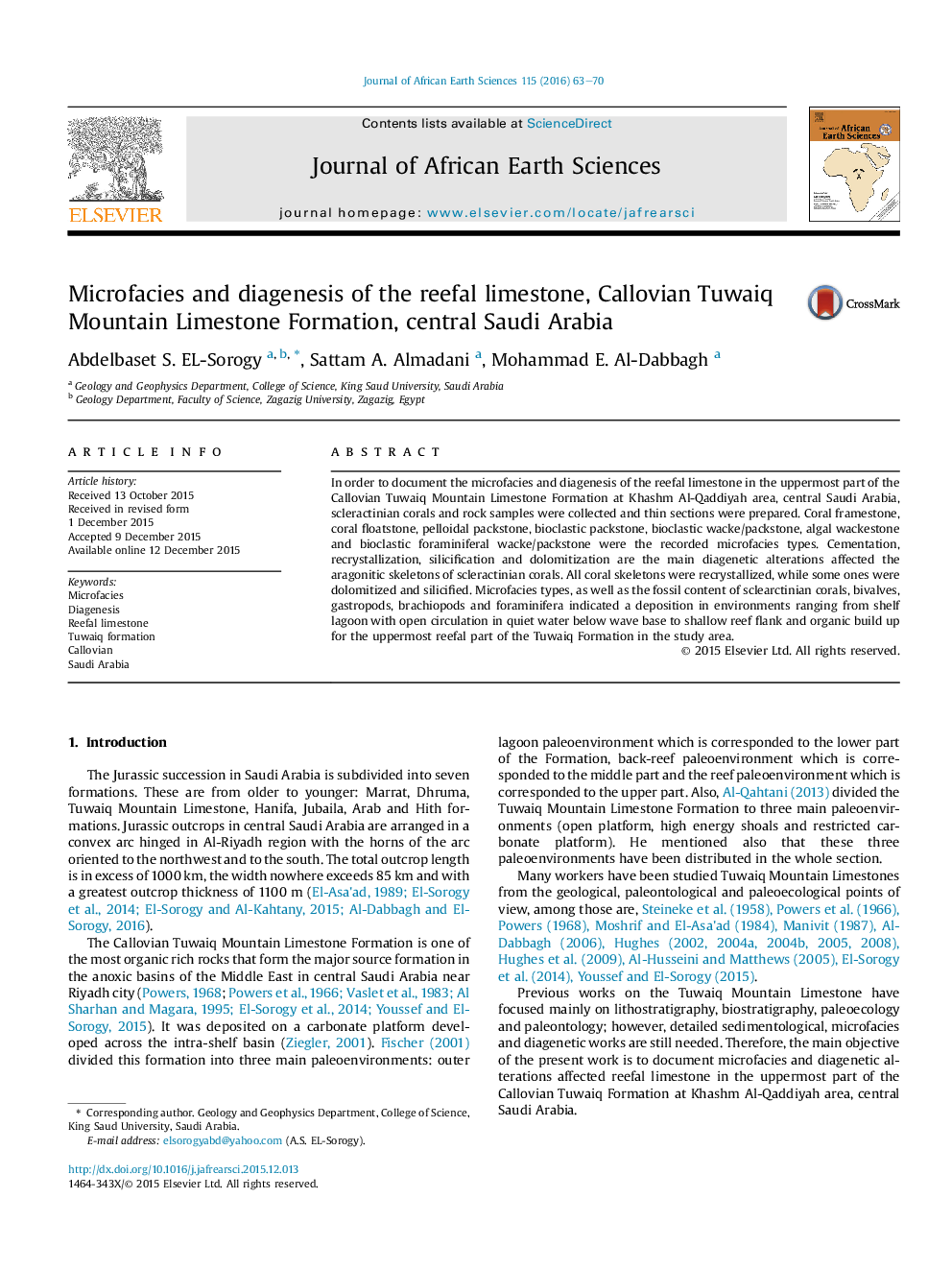| Article ID | Journal | Published Year | Pages | File Type |
|---|---|---|---|---|
| 4728400 | Journal of African Earth Sciences | 2016 | 8 Pages |
•Seven microfacies types have been recognized from the reefal part of the Callovian Tuwaiq Formation, Saudi Arabia.•Cementation, recrystallization, silicification and dolomitization are the main diagenetic alterations in the study area.•The reefal limestone was deposited in environments ranging from shelf lagoon to shallow reef flank and organic build up.
In order to document the microfacies and diagenesis of the reefal limestone in the uppermost part of the Callovian Tuwaiq Mountain Limestone Formation at Khashm Al-Qaddiyah area, central Saudi Arabia, scleractinian corals and rock samples were collected and thin sections were prepared. Coral framestone, coral floatstone, pelloidal packstone, bioclastic packstone, bioclastic wacke/packstone, algal wackestone and bioclastic foraminiferal wacke/packstone were the recorded microfacies types. Cementation, recrystallization, silicification and dolomitization are the main diagenetic alterations affected the aragonitic skeletons of scleractinian corals. All coral skeletons were recrystallized, while some ones were dolomitized and silicified. Microfacies types, as well as the fossil content of sclearctinian corals, bivalves, gastropods, brachiopods and foraminifera indicated a deposition in environments ranging from shelf lagoon with open circulation in quiet water below wave base to shallow reef flank and organic build up for the uppermost reefal part of the Tuwaiq Formation in the study area.
